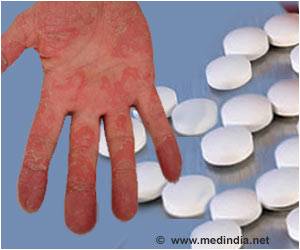
Rats exposed to high fructose intake show early disruptions in the autonomic nervous, cardiovascular, and metabolic systems, elevating the risk of adult chronic diseases like diabetes and obesity, as per a study by Brazilian scientists. The findings are published in the International Journal of Obesity.
The findings confirm information in the scientific literature regarding the appearance of metabolic disorders such as high levels of triglycerides (150 mg/dL or more) and insulin resistance in offspring of parents that overconsume fructose. In addition, the offspring in the study exhibited an increase in blood pressure and impairment of the baroreflex, a physiological mechanism that helps keep blood pressure stable.
The Role of Fructose in Our Diets and Its Link to Obesity
Although fructose is naturally present in fruit, honey and some vegetables, it is a simple sugar (monosaccharide) widely used as a food and beverage sweetener. High-fructose corn syrup is an ingredient in soft drinks, cakes, candy and cookies. It sweetens 20%-80% more than pure glucose. Overconsumption of fructose has been associated with the high prevalence of overweight and obesity in the world population, including children.
“Medicine has had to concentrate on firefighting for too long – acting after disease is already there. We now have enough elements and scientific research for preventive medicine. Future generations will have to face this time bomb unless we make prevention effective,” said Kátia De Angelis, corresponding author of the article and a professor of physiology at the Federal University of São Paulo (UNIFESP) in Brazil.
Over half the world population, or more than 4 billion people, are set to be overweight or obese by 2035 unless meaningful action is taken to address the problem, according to World Obesity Atlas 2023, which puts the annual rise in numbers of overweight and obese adults and children at 2.8% and 4.4% respectively.
In Brazil, 41% of adults are expected to become obese by 2035, up from 17.1% currently, according to a survey by the Brazilian Health Ministry (Covitel 2023 – Telephone Survey on Risk Factors for Chronic Non-Communicable Diseases During the Pandemic). The Brazilian Diabetes Society estimates that between 60% and 90% of diabetics are also obese and that the proportion is especially high among over-40s.
“Of course, overconsumption of fructose isn’t the only factor in obesity, but it’s been accompanied by growth in the proportion of the population who are overweight and obese,” De Angelis said.
Fructose is metabolized in the liver, and large amounts of the monosaccharide can increase fatty acid synthesis there, leading to a buildup of triglycerides and a rise in body weight, which in turn is associated with a rise in the inflammatory molecules involved in the development of other diseases.
Advertisement
According to the American Heart Association (AHA), a healthy diet should limit sugar intake to 100 calories (26 g) per day for women and 150 calories per day (39 g) for men. For comparison, a 350 ml soft drink contains 38 g of sugar. The World Health Organization (WHO) recommends that sugar be limited to 10% of daily calorie intake (50 g or about ten teaspoons for an intake of 2,000 calories, for example).
De Angelis heads the Brazilian Society of Hypertension (SBH) and teaches graduate students at UNIFESP and Nove de Julho University (UNINOVE). She has studied aspects of cardiovascular disease, diabetes and obesity for 20 years. An article by De Angelis and collaborators published in the American Journal of Physiology in 2012 showed that adult mice submitted to chronic fructose overconsumption developed insulin resistance as well as hemodynamic and autonomic dysfunctions associated with an inflammatory profile. Their systolic blood pressure became elevated a fortnight after starting the high-fructose diet.
Advertisement
“We were surprised by the effect of a small rise in blood pressure accompanied by a sharp rise in sympathetic modulation on their cardiovascular system. What surprised us was that the rise in sympathetic modulation happened before any metabolic changes, such as alterations in levels of glucose and triglycerides, for example, based on the classical clinical measurements made by physicians. Blood pressure hardly changed, but sympathetic hyperactivity was already very much present. This served as a warning about ANS dysfunction controlling the viscera,” De Angelis told Agência FAPESP.
In the more recent study, the rats were given drinking water with 10% fructose for 60 days before mating, and their offspring were assessed 30 days after weaning. Lower birth weight, increased levels of triglycerides and insulin resistance were observed in the offspring compared to controls, as well as elevated blood pressure and baroreflex sensitivity impairment, characterized by reduced bradycardic and tachycardic responses (meaning that heart rate deceleration and acceleration did not occur as they should). The baroreflex impairment was associated with reduced insulin tolerance and elevated systolic blood pressure.
“What we showed was a mechanism for early detection of dysfunctions,” De Angelis explained. “We’re trying to alert physicians to the need to evaluate children before elevated blood pressure or metabolic dysfunction is diagnosed so that earlier signs such as those associated with the ANS can be detected. If children or parents are exposed to high levels of fructose, the children are likely to develop dysfunctions in adulthood. If we can detect the signs early enough, it may be possible to attenuate or delay the appearance of disease.”
The researchers are now evaluating therapeutic alternatives and the effects of physical exercise. Previous studies by the group demonstrated the benefits of exercise training on animals that consumed fructose from infancy or in adult life.
Source-Eurekalert



